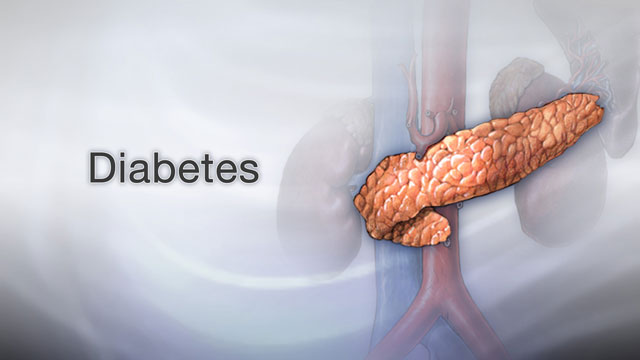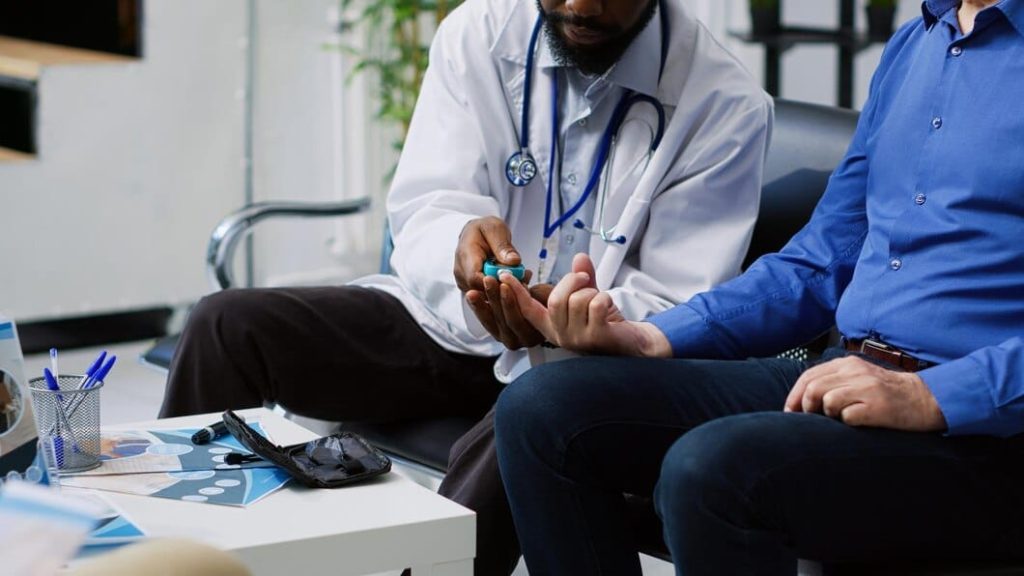Diabetes mellitus (DM) is one of the most common complications after kidney transplantation and is associated with unfavorable outcomes including death. DM can be present before transplant but post-transplant diabetes mellitus (PTDM) refers to diabetes that is diagnosed following solid organ transplantation. Despite its high prevalence, optimal treatment to prevent complications of PTDM are unknown. Medical therapy of pre-existent DM or PTDM after transplant is challenging due to frequent interactions between antidiabetic and immunosuppressive agents. There is also frequent need for medication dose adjustments due to residual kidney disease and a higher risk of medication side effects in patients treated with immunosuppressive agents. Sodium glucose 2 inhibitors (SGLT2-i) have demonstrated a favorable cardio-renal profile in patients with DM without a transplant and hence hold great promise in this patient population although there is concern about the higher risk of urinary tract infections. The significant gaps in our understanding of the pathophysiology, diagnosis and management of diabetes mellitus after kidney transplantation need to be urgently addressed.

The first recommendation of the group was to change the name from NODAT to PTDM because many cases of diabetes first identified after transplant are likely not new. There is considerable variation among transplant centers as to how or if candidates are screened for diabetes before transplant, but most centers use only fasting glucose and hemoglobin A1C for screening candidates. These methods are less sensitive than the OGTT for identifying diabetes in patients.
Incidence varies with the type of transplant because of differences in age, body mass index (BMI), and underlying risk of the candidate group. Incidence also varies among transplant centers because of variations in the patients they serve with respect to race/ethnicity or prevalence of obesity, which affect risk, as well as variations in their usual immunosuppression regimen. However, the data published before the first consensus conference were quite variable, many centers did not fully embrace those first criteria, and no data have been published since the second criteria published in 2014.
Some genes associated with risk of end-organ failure leading to solid organ transplant are also associated with risk of PTDM. Specifically, several retrospective studies have identified autosomal dominant polycystic kidney disease (PCKD) as increasing the risk of PTDM after kidney transplant. However, at least one retrospective cohort study, where the diabetes screening protocol was not well described, showed no significant difference in new-onset diabetes from matched controls. Yet several studies have suggested a potential mechanism for risk. In one study, carriers of the C variant gene polymorphism, among those with autosomal dominant PCKD, were found to have higher body fat content and glucose response to oral glucose challenge, but no insulin secretory defect.
Although some transplant groups refer to this as post-transplant diabetes, it might also be considered CFRD, for which this group is also at risk. Which designation should be used has not been discussed by any consensus panel or transplant organization.
The remaining available immunosuppressive agents vary with respect to risk for PTDM. Mycophenolate mofetil and azathioprine have not been shown to have a large impact on insulin action or glucose metabolism and so do not appear to have a major role in PTDM. There is increasing evidence that the other commonly used immunosuppressants, particularly CNIs (eg, tacrolimus and cyclosporine) and inhibitors of the mammalian target of rapamycin (mTOR; eg, sirolimus or rapamycin and everolimus), may contribute to PTDM. Our work in animals suggests a dose-dependent effect of both tacrolimus and sirolimus on glucose metabolism, although there are no comparable human studies. However, there are reports that both glucose intolerance and the dyslipidemia that occurs predominantly with mTOR inhibitors improve as the dose is reduced.
Intensive lifestyle changes, reduced calorie intake, weight loss, and exercise are well established steps to prevent type 2 diabetes in nontransplant populations with long-term impact. Attention to preventing weight gain may be another strategy to prevent PTDM, although weight loss should not be encouraged immediately after transplant to allow time for proper wound healing. Although activity may be limited early because of pain or muscle loss, lifestyle modification, including dietitian referral, exercise program, and weight loss advice, are beneficial after kidney transplant for those with impaired glucose tolerance and should be incorporated into any prevention measure.
However, the potential side effects of thiazolidinediones (eg, edema, heart failure, and bone loss) reduce enthusiasm for their use as a diabetes prevention agent in any transplant group. Prevention strategies are likely to be required early after transplant, and metformin can also be difficult to use in this time frame because of frequent hospitalizations, contrast procedures and infections, and reduced kidney function.

I.) Introduction
Solid organ transplantation is currently an important option for the treatment of many types of organ failure, including kidney, liver, heart, pancreas, lung, and small bowel. The introduction of cyclosporine heralded a new era in transplant outcomes, and outcomes have continued to improve with new regimens and improvements in care. Immunosuppression has so improved graft and patient survival after kidney transplant.II.) Diagnosis and Incidence
Although these criteria were focused on the diagnosis of diabetes after kidney transplant, they have been largely adopted by other transplant groups. Based on American Diabetes Association and World Health Organization (WHO) criteria for nontransplant patients at that time, diagnosis of NODAT could result from a fasting glucose ≥ 126 mg/dL (7 mmol/L) on more than one occasion, random glucose ≥ 200 mg/dL (11.1 mmol/L) with symptoms, or a 2-hour glucose level after a 75-g oral glucose tolerance test (OGTT) of ≥ 200 mg/dL (11.1 mmol/L).The first recommendation of the group was to change the name from NODAT to PTDM because many cases of diabetes first identified after transplant are likely not new. There is considerable variation among transplant centers as to how or if candidates are screened for diabetes before transplant, but most centers use only fasting glucose and hemoglobin A1C for screening candidates. These methods are less sensitive than the OGTT for identifying diabetes in patients.
Incidence varies with the type of transplant because of differences in age, body mass index (BMI), and underlying risk of the candidate group. Incidence also varies among transplant centers because of variations in the patients they serve with respect to race/ethnicity or prevalence of obesity, which affect risk, as well as variations in their usual immunosuppression regimen. However, the data published before the first consensus conference were quite variable, many centers did not fully embrace those first criteria, and no data have been published since the second criteria published in 2014.
III.) Known and Potential Risk Factors
A.) Pre-existing diabetes risk
Just as with type 2 diabetes, PTDM is more likely to occur in individuals with pre-existing type 2 diabetes risk factors, including age and a family history of type 2 diabetes, and in those with race or ethnicity considered at higher risk than Caucasians for type 2 diabetes—particularly African Americans and Hispanics. Although Native Americans are among those with the highest risk for type 2 diabetes, there are less data identifying them at high risk for PTDM because most Native Americans presenting for transplant have already been diagnosed with diabetes. Importantly, obesity, whether defined as elevated BMI or increased waist circumference, has also been associated with increased risk of type 2 diabetes as well as PTDM. Obesity can predate the transplant, but weight gain after transplant can also contribute.B.) Associated candidate genes
Multiple studies have found an association between type 1 and type 2 diabetes candidate gene single nucleotide polymorphisms (SNPs) with risk for PTDM, including several genes implicated in maturity onset diabetes of the young syndromes. For example, in Hispanic kidney transplant recipients, SNPs in insulin receptor substrate (IRS)-1 and hepatocyte nuclear factor 4 were associated with diabetes after kidney transplant. One of the commonly used classes of immunosuppressant agents, the calcineurin inhibitors (CNIs; cyclosporine and tacrolimus), bind to nuclear factor of activated T-cells (NFAT). NFAT, in turn, can down-regulate adiponectin transcription, so individuals with SNP in this candidate gene may be at greater risk for glucose intolerance related to CNI-containing regimens.Some genes associated with risk of end-organ failure leading to solid organ transplant are also associated with risk of PTDM. Specifically, several retrospective studies have identified autosomal dominant polycystic kidney disease (PCKD) as increasing the risk of PTDM after kidney transplant. However, at least one retrospective cohort study, where the diabetes screening protocol was not well described, showed no significant difference in new-onset diabetes from matched controls. Yet several studies have suggested a potential mechanism for risk. In one study, carriers of the C variant gene polymorphism, among those with autosomal dominant PCKD, were found to have higher body fat content and glucose response to oral glucose challenge, but no insulin secretory defect.
Although some transplant groups refer to this as post-transplant diabetes, it might also be considered CFRD, for which this group is also at risk. Which designation should be used has not been discussed by any consensus panel or transplant organization.
C.) Role of immunosuppression agents
Corticosteroids are well established to cause hyperglycemia through several mechanisms: by inducing or worsening pre-existing insulin resistance, increasing hepatic gluconeogenesis, and long-term, by stimulating appetite and weight gain. The impact is dose-dependent. High-dose corticosteroids, often used as part of induction protocols in the immediate post-transplant hospitalization, have much greater impact than chronic low-dose corticosteroids that are common to many maintenance immunosuppression protocols. A recent prospective randomized trial of early withdrawal of corticosteroids vs remaining on low-dose chronic prednisone (5 mg/d) from 6 months to 5 years after kidney transplant showed that incidence of PTDM was minimally impacted.The remaining available immunosuppressive agents vary with respect to risk for PTDM. Mycophenolate mofetil and azathioprine have not been shown to have a large impact on insulin action or glucose metabolism and so do not appear to have a major role in PTDM. There is increasing evidence that the other commonly used immunosuppressants, particularly CNIs (eg, tacrolimus and cyclosporine) and inhibitors of the mammalian target of rapamycin (mTOR; eg, sirolimus or rapamycin and everolimus), may contribute to PTDM. Our work in animals suggests a dose-dependent effect of both tacrolimus and sirolimus on glucose metabolism, although there are no comparable human studies. However, there are reports that both glucose intolerance and the dyslipidemia that occurs predominantly with mTOR inhibitors improve as the dose is reduced.
D.) Potential role of “stress,” inflammation, and infection
Acute and chronic systemic inflammation have long been shown to be risk factors for the development of type 2 diabetes. Solid organ transplantation is, by definition, an inflammatory state because of ongoing graft-host response due to acute and/or chronic rejection, reduced renal function common in this setting, and great incidence of and/or chronic infections associated with immunosuppression. Some of these potential causes of inflammation that may contribute to glucose intolerance and the development of PTDM are summarized below. Acute and chronic rejection is associated with risk of PTDM after kidney transplant. However, cause and effect are harder to prove because rejection is also generally treated with high-dose corticosteroids, which can also contribute to risk.IV.) The Impact of PTDM on Transplant Outcomes
Because diabetes and glucose intolerance alone have both been associated with adverse long-term outcomes after transplant in many groups, there is concern that PTDM may also impact outcomes after transplantation. These studies will necessarily depend, in part, on how and when PTDM is diagnosed. As noted previously, there was little consistency in the diagnosis of diabetes after transplant before the first International Consensus Guidelines were established in 2003, and there is still considerable variation in how centers screen for diabetes before and after transplant. Thus, many of the earliest studies of PTDM likely included patients who had unrecognized and previously untreated pretransplant diabetes. Because the diagnosis of PTDM was often transplant center-specific and often required a higher glucose threshold for a longer period of time than is used now, unrecognized or untreated hyperglycemia could itself impact outcomes.V. Treating Diabetes After Transplant
The treatment of diabetes in hospitalized transplant recipients requires attention to a multitude of factors that can impact glycemic control and influence the risk for adverse effects. Methods to manage hyperglycemia vary among transplant centers and also vary according to whether the patient is immediately post-transplant or is being admitted in the post-transplant setting for another issue. Specific glycemic targets have not been established for patients in the immediate post-transplant setting. However, data from a study in kidney transplant recipients suggest that tight glycemic control (blood glucose goal, 70–110 mg/dL) is associated with increased hypoglycemia and may increase the risk for future rejection episodes compared to standard blood glucose control (blood glucose goal, 70–180 mg/dL). Thus, for transplant recipients, it seems reasonable to follow current general practice guidelines for inpatient blood glucose goals (intensive care unit blood glucose goal, 140–180 mg/dL; non-intensive care unit premeal blood glucose goal, <140 mg/dL; random blood glucose goal, <180 mg/dL).VI. Prevention of PTDM
From the perspective of the patient as well as the provider, prevention of PTDM would reduce cost and improve patient quality as well as possibly quantity of life. This is being approached by evaluating new drugs for their relative ability to affect glucose metabolism and insulin action; studying new combinations of existing drugs, including altering the maximum doses or timing of changes for doses to reduce the impact on glucose intolerance; protection of islets with early insulin treatment immediately after transplant; and using agents that have been or are being studied for the prevention of diabetes in nontransplant groups.Intensive lifestyle changes, reduced calorie intake, weight loss, and exercise are well established steps to prevent type 2 diabetes in nontransplant populations with long-term impact. Attention to preventing weight gain may be another strategy to prevent PTDM, although weight loss should not be encouraged immediately after transplant to allow time for proper wound healing. Although activity may be limited early because of pain or muscle loss, lifestyle modification, including dietitian referral, exercise program, and weight loss advice, are beneficial after kidney transplant for those with impaired glucose tolerance and should be incorporated into any prevention measure.
However, the potential side effects of thiazolidinediones (eg, edema, heart failure, and bone loss) reduce enthusiasm for their use as a diabetes prevention agent in any transplant group. Prevention strategies are likely to be required early after transplant, and metformin can also be difficult to use in this time frame because of frequent hospitalizations, contrast procedures and infections, and reduced kidney function.

